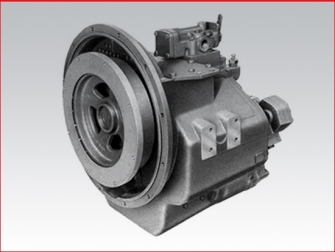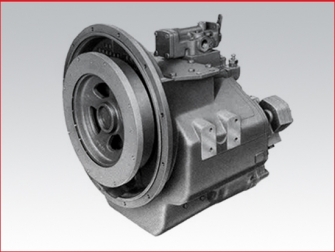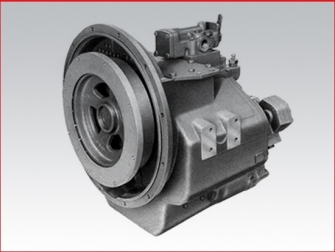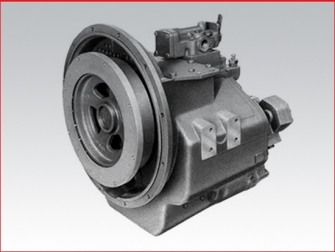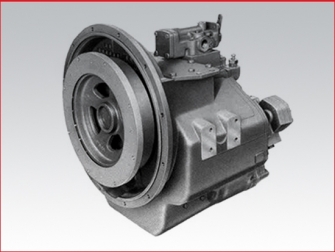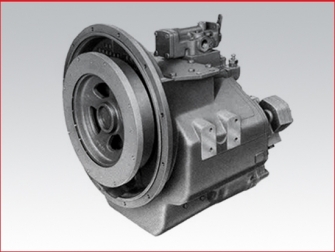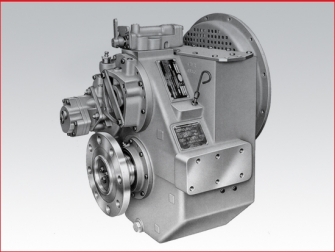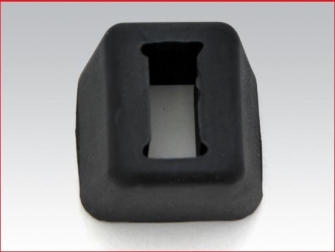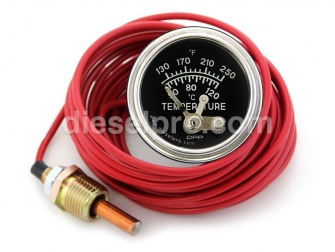Twin Disc MG 5091 Marine Transmission Parts for Sale - Rebuilt MG5091 Gear Section
 Loading...
Loading... Twin Disc MG5091 Rebuilt Marine Transmissions — Complete Catalog & Buyer’s Guide
Welcome to the dedicated rebuilt section for the Twin Disc MG5091 marine transmission. This page focuses exclusively on remanufactured MG5091 gears available in the full range of popular ratios and in both shallow and deep case configurations. Each unit listed below is professionally rebuilt, spin-tested, and sold on an exchange basis with a refundable core deposit. Inventory availability, case depth, ratio selection, and core handling are clearly laid out so you can select the correct MG5091 for your propulsion package and place your order with confidence.
Whether you’re restoring a single-engine vessel, refitting a commercial workboat, or refreshing a twin-screw sport-fisher, the MG5091’s compact footprint, dependable hydraulics, and proven Twin Disc clutch design make it a favorite. The goal of this page is to help you compare options at a glance, understand where each ratio shines, and quickly finalize the best fit for your hull form, main engine output, and cruising expectations—without wading through unrelated models or generic content. If you already know your ratio and case depth, use the listings below to go straight to checkout. If you’re still deciding, the selection guidance and FAQs later in this page will walk you through the process.
Rebuilt MG5091 Inventory — Spin-Tested, Exchange Basis
All MG5091 units on this page are remanufactured and spin-tested prior to shipment. “Spin-tested” means the gearbox is run on a test stand through forward and reverse engagement cycles and monitored for smooth clutch application, pressure stability, and abnormal noise. This gives you a functional confidence check before the transmission leaves the shop, so you can drop it in and move on to alignment and sea trials with fewer surprises.
Every rebuilt MG5091 below is sold with a refundable core deposit. Returning a buildable core in a timely manner keeps your project cost-effective and helps maintain industry sustainability by keeping quality housings and carriers in circulation. See the “Core Exchange & Returns” section for a quick overview of how the deposit and return window work.
In stock items display current availability. “Shallow case” and “deep case” are identified in the listing title; see the case comparison section below if you’re weighing which enclosure is appropriate for your engine bed height and coupler clearance.
MG5091 Ratio Options & Use-Case Guidance
Choosing a ratio isn’t only about top speed—it’s about propeller efficiency, thrust at low speeds, engine load, and the kind of boating or commercial duty you perform most often. The MG5091 supports a broad span of ratios from 1.5:1 through 5.0:1. Below you’ll find a plain-English breakdown of what each ratio typically offers in terms of feel and performance, with notes on shallow vs. deep case considerations. Keep in mind that the best ratio for your vessel also depends on prop diameter limits, shaft line angle, and the primary operating RPM range of your main engine. If you’re replacing like-for-like, select the same ratio you previously ran. If you’re upgrading engines or changing propellers, use the guidance below as a starting point for a conversation with your naval architect, yard, or propeller shop.
MG5091 — 1.5:1 (Shallow Case, Rebuilt | Spin-Tested)
A 1.5:1 ratio is a favorite for applications seeking a more direct-drive feel while still gaining a modest propeller efficiency boost over 1:1. Expect crisp throttle response and a lively transition onto plane for lighter boats. This ratio works well when:
-
The main engine produces robust torque in the midrange and can comfortably support a slightly larger prop than true direct drive.
-
You’re targeting quick acceleration, nimble harbor handling, and frequent throttle modulation—think fast tenders, lighter patrol craft, or performance-leaning recreational hulls.
-
Prop diameter is modestly constrained by hull aperture, but you still want to swing a bit more blade area than a 1:1 would allow.
Shallow case packaging helps where vertical envelope is tight; it can simplify installation on existing beds and minimize interference with deck beams or cockpit soles.
Listing snapshot:
Twin Disc MG5091 marine transmission ratio 1.5:1 — rebuilt (Shallow Case).
Spin-tested. Sold with refundable core deposit.
Pictures • In Stock • Add to Cart
MG5091 — 1.7:1 (Shallow Case, Rebuilt | Spin-Tested)
Moving to 1.7:1 adds a touch more torque multiplication at the shaft, enabling a slightly larger-diameter or higher-pitch prop without over-loading the engine. Consider 1.7:1 when:
-
You often operate in a mixed profile—periods of displacement or semi-displacement cruising with occasional sprinting to make a tide gate.
-
You want stronger punch against wind, chop, or current during harbor maneuvers, yet still preserve an agile throttle feel offshore.
-
The engine’s recommended continuous RPM lines up nicely with the prop load curve at 1.7:1, trimming fuel burn at common cruise settings.
Again, the shallow case is beneficial for retrofit scenarios with limited vertical clearance.
Listing snapshot:
Twin Disc MG5091 marine transmission ratio 1.7:1 — rebuilt (Shallow Case).
Spin-tested. Sold with refundable core deposit.
Pictures • In Stock • Add to Cart
MG5091 — 2.0:1 (Shallow Case, Rebuilt | Spin-Tested)
At 2.0:1, you’re firmly into the mid-range of reduction—an excellent balance for many semi-displacement and planing boats. Benefits typically include:
-
Ability to turn a wider, higher-area propeller, improving bite in rougher water and enhancing acceleration with a load.
-
Reduced engine RPM for a given boat speed versus a “shorter” ratio, which can mean quieter operation and improved fuel economy (subject to hull and prop match).
-
More forgiving setup if you run heavier cruising gear, auxiliary tanks, or workboat equipment.
Shallow case keeps envelope compact, often matching older bed rails without large modifications.
Listing snapshot:
Twin Disc MG5091 marine transmission ratio 2.0:1 — rebuilt (Shallow Case).
Spin-tested. Sold with refundable core deposit.
Pictures • In Stock • Add to Cart
MG5091 — 2.5:1 (Shallow Case, Rebuilt | Spin-Tested)
Stepping to 2.5:1 tilts the setup toward pulling power and low-speed authority while still allowing healthy cruise speeds on the right hull. It’s a popular choice when:
-
You operate in working conditions—towing, utility, crew transfer, or gear-heavy recreational operations—and want muscular response in tight areas.
-
The vessel benefits from larger prop disc area to minimize cavitation, improve station-keeping, and hold headway in steep chop.
-
You prefer a lower engine RPM at typical cruise for comfort.
Shallow case helps if the shaft line sits high or you’re limited by deck geometry.
Listing snapshot:
Twin Disc MG5091 marine transmission ratio 2.5:1 — rebuilt (Shallow Case).
Spin-tested. Sold with refundable core deposit.
Pictures • In Stock • Add to Cart
MG5091 — 3.0:1 (Shallow Case, Rebuilt | Spin-Tested)
With 3.0:1, the MG5091 becomes a torque-focused partner. Typical advantages:
-
Enables substantially larger props for emphatic thrust at low speeds—ideal for heavy displacement work, dive support, or boats that push into head seas frequently.
-
Offers a relaxed engine pace at target hull speeds, often boosting comfort and endurance on long runs.
-
Adds margin for slow-speed control, which is valuable in tight marina basins and during docking in tricky crosswinds.
Shallow case can still be advantageous on refits with constrained vertical space.
Listing snapshot:
Twin Disc MG5091 marine transmission ratio 3.0:1 — rebuilt (Shallow Case).
Spin-tested. Sold with refundable core deposit.
Pictures • In Stock • Add to Cart
MG5091 — 3.5:1 (Shallow Case, Rebuilt | Spin-Tested)
The 3.5:1 sets you up for maximum pull within the shallow-case envelope:
-
Excellent where bollard-type thrust matters: pushing against current, hauling gear, or holding station in weather.
-
Supports a large prop with deeper bite, assisting in load-carrying and improving tracking at slow speeds.
-
Often chosen when you prioritize muscle and control over outright sprint speed.
Shallow case keeps the installation compact while still delivering meaningful reduction.
Listing snapshot:
Twin Disc MG5091 marine transmission ratio 3.5:1 — rebuilt (Shallow Case).
Spin-tested. Sold with refundable core deposit.
Pictures • In Stock • Add to Cart
MG5091 — 4.0:1 (Deep Case, Rebuilt | Spin-Tested)
At 4.0:1, you’ve crossed into deep case territory for the MG5091 catalog. The deep case provides additional internal volume and envelope often used in high-reduction versions:
-
Designed for heavy-duty pulling and high thrust at low to moderate boat speeds.
-
A strong match for heavier hulls, robust shafting, and large-diameter props where aperture allows it.
-
Positions your engine to run in a comfortable, efficient band while the prop does the hard work, improving control in difficult seas.
Listing snapshot:
Twin Disc MG5091 marine transmission ratio 4.0:1 — rebuilt (Deep Case).
Spin-tested. Sold with refundable core deposit.
Details • In Stock • Add to Cart
MG5091 — 4.5:1 (Deep Case, Rebuilt | Spin-Tested)
The 4.5:1 deep-case unit continues the emphasis on torque multiplication:
-
Allows very large propellers for vessels that spend more time in the displacement regime or require decisive control in narrow waterways and congested docks.
-
Can contribute to lower noise and less vibration at cruise when matched correctly, because the engine operates at a steady, efficient RPM while the prop provides thrust via slower tip speeds.
-
Helps maintain prop grip in aerated water behind spray rails or in turbulent stern flows.
Listing snapshot:
Twin Disc MG5091 marine transmission ratio 4.5:1 — rebuilt (Deep Case).
Spin-tested. Sold with refundable core deposit.
Details • In Stock • Add to Cart
MG5091 — 5.0:1 (Deep Case, Rebuilt | Spin-Tested)
At the top of this catalog’s reduction range, the 5.0:1 deep-case MG5091 prioritizes maximum thrust and control:
-
Suited to demanding operations and heavily laden hulls that need unwavering shove at slow to moderate speeds.
-
Enhances maneuvering authority in wind and current, especially on single-screw commercial craft or utility vessels that must hold position.
-
A strong candidate when the propeller aperture supports very large diameters and you value low engine RPM at working speed.
Listing snapshot:
Twin Disc MG5091 marine transmission ratio 5.0:1 — rebuilt (Deep Case).
Spin-tested. Sold with refundable core deposit.
In Stock • Add to Cart
Shallow Case vs. Deep Case — Which MG5091 Housing Do You Need?
Both shallow and deep case MG5091 transmissions are engineered around the same mission: strong, repeatable clutch engagement and efficient power transfer. The primary difference is envelope and internal volume, which correlates with the higher reduction options shown above. Here’s a quick way to think about it:
-
Shallow Case (1.5:1 to 3.5:1)
Best where vertical clearance is limited—refits under tight deck heights, older engine beds, or installations where shaft centerline sits relatively high. Ratios in this band typically pair with moderate to large props for mixed-profile operation, balancing acceleration and cruise efficiency. -
Deep Case (4.0:1 to 5.0:1)
Optimized for higher reductions that support very large prop areas and high thrust at lower boat speeds. If you routinely work in demanding conditions, push a heavy hull, or need precise low-speed control, deep-case ratios are appealing. Ensure you have adequate vertical space and service access for the deeper envelope.
If you’re replacing an existing MG5091, matching the same case depth saves time and minimizes alignment or bed modifications. For new builds or significant refits, measure carefully from engine output flange to stringers and overhead structure to confirm clearance for your chosen case depth.
How to Choose the Right MG5091 Ratio (Practical Guide)
Selecting ratio is a combination of engine characteristics, propeller limits, and hull behavior. Use the four-step process below:
-
Start with the engine’s continuous RPM and torque curve.
Identify the recommended continuous operating band (often a range just below rated power). Your target cruise should let the engine sit in this happy zone under typical load. -
Work within your propeller diameter constraints.
Hull aperture and shaft angle limit how large a prop you can swing. Higher reduction often enables a larger diameter and more blade area, which can be a net positive for thrust, efficiency, and control—provided the hull allows it. -
Match the ratio to your mission profile.
-
Lighter, faster boats that sprint and plane quickly often favor 1.5:1 to 2.0:1.
-
Mixed-use, semi-displacement profiles often land around 2.0:1 to 3.0:1.
-
Workboats, heavy cruisers, and displacement hulls often benefit from 3.0:1 to 5.0:1.
Confirm with a prop shop or designer.
Once you’ve narrowed to two candidate ratios, have a prop professional run the numbers for pitch, diameter, and expected slip at your hull speed. This verifies that the engine will load correctly and prevents “lugging” or chronic over-revving.
Quick tip: If you’re happy with how the old setup performed and your new engine output is similar, sticking with the same ratio simplifies everything. If you’re chasing more bite and better slow-speed control, consider stepping one ratio higher (e.g., 2.0:1 → 2.5:1) provided your prop aperture and shaft can accommodate the change.
What “Spin-Tested” Means for Your MG5091
Every MG5091 on this page is spin-tested prior to shipment. The test confirms:
-
Smooth engagement in forward and reverse
-
Proper hydraulic pressure development in each direction
-
Stable bearing and gear behavior through a range of stand speeds
-
Noise checks for abnormal whine, rattle, or chatter that would signal an issue
This functional test provides real assurance that the transmission is ready for service once installed and aligned. While no bench test can replicate full in-water loads, a pass on the spin stand dramatically reduces the likelihood of in-shop defects making it aboard your vessel.
We keep the rebuilt section focused on essentials; the key point is that you’re receiving a spin-tested MG5091 so you can proceed to alignment and sea trials with confidence.
Core Exchange & Returns — How the Deposit Works
All rebuilt MG5091 units in this catalog are sold with a refundable core deposit. The process is straightforward:
-
Pay the deposit at checkout together with the transmission price.
-
Receive the rebuilt MG5091 and install it on your schedule.
-
Return your core—the used MG5091 casing/assembly—within the stated window.
-
After inspection confirms the core is buildable (no catastrophic case damage, etc.), your deposit is refunded.
A buildable core keeps the remanufacturing chain healthy and helps maintain the MG5091 supply for other boaters and workboats. It also lowers your net project cost and speeds up the availability of future units.
If you’re unsure whether your old gearbox qualifies as a buildable core, photos of the case, mounting ears, and flanges are helpful. A quick visual check can often clear up questions before you ship.
Installation Envelope & Fit Notes (High-Level)
While we don’t dive into step-by-step installation on this page, here are the high-level fit considerations most owners and yards verify when choosing an MG5091 replacement:
-
Case Depth: Verify shallow vs. deep case clearance beneath deck and around bulkheads.
-
Shaft Height & Angle: Ensure the output flange and shaft line remain aligned within acceptable coupling tolerances.
-
Mounting Footprint: Confirm bed rail spacing and mount hardware match the MG5091’s lugs and bolt dimensions.
-
Cooling Circuit: Note your oil cooler plumbing and ensure hose routing remains clean and accessible.
-
Control Interface: Plan for shift/control cable or electronic actuator connections consistent with your helm system.
Your yard or mechanic knows these checks well. This page keeps the focus on the catalog and selection; once you choose the ratio and case, they’ll handle the practical details.
Ordering, Shipping & Lead-Time Expectations
The listings above show In Stock status when inventory is ready to ship. Rebuilt transmissions are typically crated for freight to protect the case and flange surfaces. When you place an order:
-
Confirm delivery address (commercial dockyards often simplify receiving).
-
Ensure a forklift or hoist is available to safely offload the crate.
-
Keep your core crating—you can reuse the same materials to return your core promptly and protect it in transit.
If you’re syncing an engine swap or yard haul-out, order early so the MG5091 arrives before your scheduled work window. This helps your yard keep momentum on the job and minimizes lay-days on the hard.
Troubleshooting Ratio Decisions — Real-World Scenarios
Still torn between two ratios? Consider these everyday examples:
-
You cruise at modest speeds but want commanding low-speed control for docking and fishing around structure.
Lean toward 2.5:1 to 3.5:1. You’ll swing more prop, gain bite, and keep the engine relaxed. -
You have a relatively light boat that jumps on plane and you enjoy quick throttle response.
Think 1.5:1 to 2.0:1 for that crisp feel, provided your engine is healthy in the midrange. -
You push a heavy hull, carry gear or catch, and fight wind or current routinely.
3.0:1 to 5.0:1, with case depth following the ratio, usually delivers the thrust and authority you want. -
You’re replacing an existing MG5091 and loved how it ran.
Match the same ratio and case depth—keeping your proven setup reduces risk and cost.
Why Choose a Rebuilt MG5091 from a Dedicated Marine Parts Provider
A rebuilt MG5091 is as much about confidence as it is about components. Buying from a specialist with deep inventory, spin-test verification, and a smooth core process keeps your project timeline on track. The advantages include:
-
Clarity: A focused MG5091 catalog—no wading through unrelated models.
-
Quality Control: Every unit spin-tested before it ships.
-
Exchange Simplicity: Core deposit + straightforward return = minimal downtime.
-
Application Support: Ratio and case depth guidance grounded in practical boating scenarios.
-
Fast Fulfillment: Clearly marked In Stock items with photos and details so you can commit with confidence.
If you’re coordinating with a yard, we can align shipping windows to your haul-out or engine room access schedule. Need matching ancillaries (coolers, mounts, couplers)? Ask—keeping transmission-adjacent items bundled saves back-and-forth and consolidates freight.
Frequently Asked Questions — MG5091 Rebuilt Section
Do I need to choose the exact same ratio my boat had before?
If you were satisfied with performance, yes—matching ratio and case depth is the fastest path to success. If you’re chasing more thrust or different cruise behavior, a step up or down may be appropriate, but confirm prop diameter and pitch before changing.
What if I’m not sure whether I need shallow or deep case?
Check the clear vertical height in your engine space and compare it to your existing unit. As a rule of thumb, higher reductions in this MG5091 catalog use deep case. When in doubt, measure from shaft centerline to sole and overhead structures, and review bed rail geometry.
Are these completely bench-verified?
Yes—each MG5091 listed here is spin-tested prior to shipment for functional verification of forward/reverse engagement and hydraulic performance.
How fast is shipping?
Items marked In Stock typically ship promptly once payment and freight arrangements are set. If you need timed delivery to meet a yard window, coordinate at checkout.
How does the core deposit refund work?
Return your buildable MG5091 core within the specified window using suitable crating. After inspection confirms the case and major castings are rebuildable, we process the refund.
Can I upgrade from shallow to deep case for a higher ratio?
Often, yes—provided your vertical clearance and shaft alignment permit it. Consult your yard and measure carefully.
What else should I check before ordering?
Confirm shaft line, coupler pattern, mounting pads, and cooler plumbing. This keeps the swap tidy and avoids last-minute surprises.
Final Selection Tips
-
Match mission to ratio. Light and lively? 1.5–2.0:1. Mixed use or semi-displacement? 2.0–3.0:1. Heavy or work-focused? 3.0–5.0:1.
-
Respect aperture limits. If your hull can’t swing the larger prop a higher ratio would allow, you may not gain the benefits you expect.
-
Keep it simple if replacing like-for-like. Matching your prior MG5091’s ratio and case minimizes refit work.
-
Lean on spin-testing. A spin-tested MG5091 reduces the risk of surprises when you splash.
-
Plan your core return. Save the crate, document the serial plate and case condition, and ship the core promptly for a smooth deposit refund.
When you’re ready, select your MG5091 ratio and case depth from the listings above, proceed to checkout, and keep your project moving. If a quick sanity check would help, share your engine model, expected cruise RPM, and prop diameter/gear with your yard or prop shop—they can validate that your ratio pick will load the engine correctly and deliver the feel you’re after.
Why Buy Your Rebuilt MG5091 Here
-
Focused MG5091 inventory with the ratios and case options most owners and yards actually use.
-
Spin-tested units that arrive ready for alignment and sea trials.
-
Transparent core exchange that keeps your net cost predictable.
-
Clear listings (ratio, case depth, stock status) so you can order in minutes.
-
Commercial-friendly shipping with crating designed for safe handling at docks and yards.
From planning to prop selection to the final bolt-up, a rebuilt Twin Disc MG5091 chosen from this catalog sets you up for reliable engagement, smooth cruising, and confident maneuvering. Pick your ratio, confirm your case depth, and get back to what matters—running your boat.



 Free US Calls: 1-888-433-4735
Free US Calls: 1-888-433-4735 International: 305-545-5588
International: 305-545-5588






